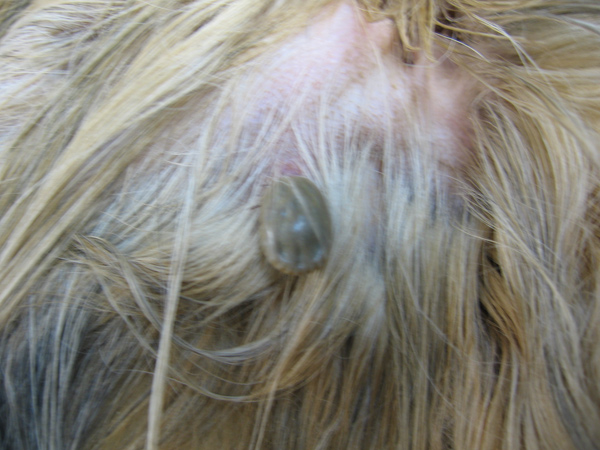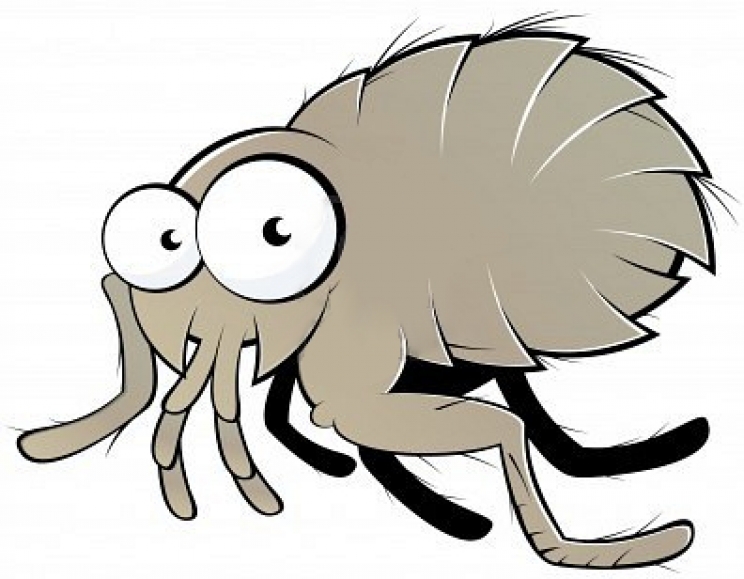The spring season brings with it many beautiful things: flowers, green grass, a mild climate and longer days ... however some very annoying animals can also show up. These are fleas and ticks.
Both are parasites, animals that live at the expense of another animal; to be precise, they are skin parasites because unlike other parasites, they do not enter the body but they limit themselves to stay on the surface, obviously causing problems.
In this page, we try to understand what is the difference between fleas and ticks, therefore how we recognize them if they were present on the skin of our animal.
These parasites are not dangerous, but they can transmit many diseases. Prevention is essential and in case our dog or our cat has contracted them, a veterinary visit will be essential to identify the presence of this problem.
Fleas
You've probably never seen a flea, and you won't see any on your pet's fur either.
In fact, they are very fast animals, which run and jump (even if they do not fly), they move flat sideways, which feed on the blood they extract from the animal by piercing its skin. From animals or humans, without particular differences, because it can affect us too.
If we move the animal's fur to look for them, they will move or jump, which is why they are difficult to see. Fortunately, they leave traces of their passage, their feces. If we pay attention to the roots of the hair, especially if it is light, but even if it is black because they are in contrast with the white colour of the skin, we will see many black dots: those are the faces of the fleas. If faces are present we know for sure the animal will also be present on our dog.
If we identify this situation, it is better to go to a vet as soon as possible because fleas can cause allergy (but we would realize it immediately) or they can transmit Dypilidium caninum. It also affects the cat as well as the dog, and it is a dangerous tapeworm that lives in the intestine.
It is important to prevent them with the pesticide, which we will discuss later, because they can jump on the body of our animal even when it touches another animal that passes by.
Ticks
These very small animals live on grass and could also continue to live there without giving problems to other animals, except that, just like mosquitoes, they need blood to mature their eggs.
So they climb onto the animals' bodies, bite them on the skin and stay there, inflating until they become “balloons” more than half a centimetre long, greyish, which can be seen very well. They stay there for a few days and then detach on their own, but if in the meantime they have a microorganism inside that causes a disease, this will pass into the blood of the dog or cat. For this reason, they should be removed as soon as possible with the help of a vet if we do not know how to do it because we would risk leaving the mouth stuck in the skin, which would cause an infection.

In cats, they transmit few diseases, whilst in dogs Babesiosis, Erlichiosis and Rickettsiosis are all diseases transmitted by ticks, so a veterinary visit is important to be sure there are no problems after removing the tick.
Pesticides
The best method to prevent the problems we have just talked about is to use the pesticide, a product that can be found in any pet shop (it is not necessary to go to the pharmacy) and which is distributed on the back of the animal about once a month.
This product should also be given, when fleas and ticks are not there: in fact, it is stinky (for them) and does not encourage them to get on our animal, so in fact it protects it from these parasites. We use the pesticide as prevention, not as a solution to the problem.
Giving the pesticide when these animals are already there on our pet is completely useless; in these cases, a drug is needed that kills them, and which must be prescribed by the veterinarian.
So let's not forget to give the pesticide, even in the winter months. Fleas and ticks, in fact, survive even in that period of the year, and often do so in the form of microscopic larvae in our home, where it is hot. We must be careful not to forget this small but important habit.










